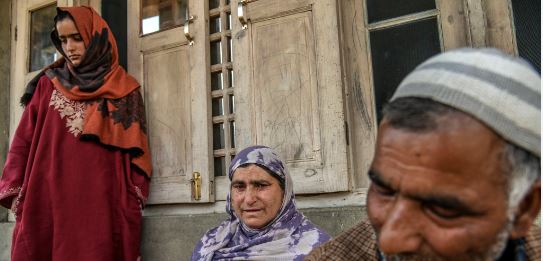
The mental health of a person depends not only on aspects of a biological nature of the individual, but also of their living conditions and the guarantee of their rights.
The Kashmir conflict has been characterized by the systematic violation of the human rights of the civilians, through different forms of violence. The conflict has not only been affecting people of IIOJK physically, but also mentally and psychologically.
India’s Universal Periodic Review (UPR) is being held on 10th November at 41st UNHR Council Geneva to review its human rights situation. UPR is “unique peer review process” of the Human Rights Council under which UN member states review the human rights performance of fellow states.
The mechanism reinforces the centrality of states in fulfilling their human rights obligations, but India pays no heed to UN Communique nor it feel obliged to take measures to improve its human rights situation.
Under extremist BJP government, India is witnessing serious regression in human rights in mainland India and Indian Administered Kashmir. Indian Administered Kashmir is an internationally recognized and UN declared disputed territory, Indian Administered Kashmir continues to be the largest prison in the world with the heaviest deployment of Indian occupation forces.
Indian prolonged oppressive policies in Indian Administered Kashmir have seriously affected the mental health of Kashmiri population and have been highlight in different health surveys and medical research reports. Indian use of pellet guns against innocent civilians had been condemned world over, the heinous act of using highly incapacitating fire arms got attention by UN and other HRW NGOs. The sophisticated and planned atrocities spread over decades has taken serious toll on the mental health of Kashmiris especially women and children.
A 2004-05 study on the prevalence of trauma had revealed that around 59% of 1,200 individuals surveyed across four districts of Kashmir had undergone a traumatic experience. The trauma of having experienced shooting or explosions was the most common. In 2009, a study published by Qaasim University’s International Journal of Health Sciences had surveyed 2,728 individuals in the Kashmir Valley. It found the prevalence of depression was highest (66.67%) in the 15-25 years age group, followed by 65.33% in the 26-35 years age group. A 2015 study, conducted by Medecins Sans Forntieres in collaboration with Kashmir University’s Department of Psychology and the Institute of Mental and Neuroscience in Srinagar, surveyed all 10 districts of the Valley. It seemed to suggest a problem of staggering scale. The Survey showed that nearly 1.8 million adults (45% of the adult population) in the Kashmir Valley are experiencing symptoms of mental distress with 41% exhibiting signs of probable depression, 26% probable anxiety and 19% probable Post Traumatic Stress Disorder (PTSD).
Moreover, in a latest medical report by Indian eye specialists has revealed that eighty percent of Kashmiris injured by pellet guns between July and November in 2016 have suffered some degree of vision loss.
The report has strongly advised against the use of pellet guns on civilians in Indian Administered Kashmir due to its incapacitating effects experienced after long periods. A sharp rise in the human rights abuses and proportionate number of patients with mental issues has also been noticed by the health experts after the abrogation of Article 370 and 35A. Indian army deployment was also increased considerably on the pretext to maintain law and order after the Indian government’s illegal actions after 2019.
Please visit our website London Institute of Peace Research for latest peace news


